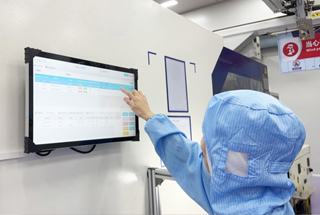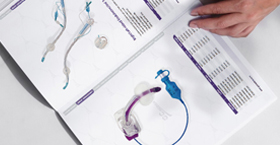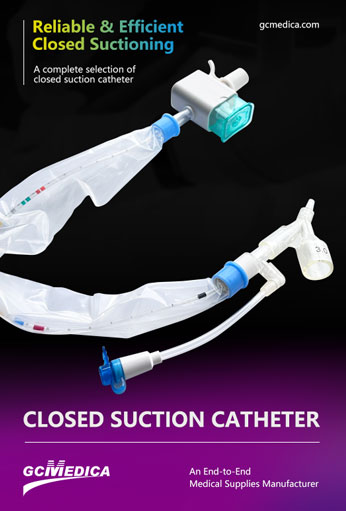The closed‐system tracheal suction catheter is an indispensable tool in critical care, designed to remove pulmonary secretions from intubated or tracheostomized patients without disconnecting them from mechanical ventilation. By maintaining a continuous circuit, it minimizes alveolar derecruitment, reduces the risk of ventilator‐associated pneumonia (VAP), and preserves positive end‐expiratory pressure (PEEP). The catheter itself is encased within a protective plastic sheath that attaches directly to the endotracheal or tracheostomy tube via a swivel adapter. When suction is applied, the inner catheter advances to aspirate secretions; when retracted, the sheath seals over the distal tip, preventing environmental contamination.
Key advantages of the closed‐system design include enhanced infection control, as the contaminated catheter never comes into direct contact with the external environment; stable oxygenation, since disconnection from the ventilator is avoided; and efficiency, because multiple suctions can be performed in succession without replacing the entire assembly. These benefits are particularly critical for patients requiring high levels of respiratory support, such as those with acute respiratory distress syndrome (ARDS), severe pneumonia, or neuromuscular weakness.
Despite its benefits, proper technique and regular maintenance are essential. The operator must adhere strictly to aseptic protocol: donning sterile gloves, confirming catheter integrity, and monitoring suction pressure (ideally 80–120 mmHg in adults) to prevent mucosal damage. Suction duration should not exceed 10–15 seconds per pass, with a 30‑ to 60‑second rest interval to allow for reoxygenation. Alarm settings on the ventilator should be adjusted to account for transient pressure changes.
Periodic replacement of the closed‐system catheter set (commonly every 72 hours) is recommended to prevent biofilm accumulation and maintain suction efficacy. Additionally, staff training on insertion technique, pressure monitoring, and troubleshooting (e.g., catheter occlusion, ventilator alarms) is crucial. While most patients tolerate closed suctioning well, clinicians should watch for transient hypoxemia, bronchospasm, or hemodynamic fluctuations.
In summary, the closed‐system tracheal suction catheter represents a significant advancement in airway management for ventilated patients. By combining safety, efficacy, and infection control, it supports better clinical outcomes in the intensive care unit. Appropriate patient selection, rigorous technique, and routine system checks ensure optimal performance and minimize potential complications.
Table: Key Features of Closed‐System Tracheal Suction Catheter
| Category | Details |
|---|---|
| Components | • Sterile suction catheter within protective sheath• Swivel adapter• Suction tubing |
| Primary Indications | • Intubated or tracheostomized patients• High PEEP requirements• ARDS, severe pneumonia |
| Advantages | • Maintains ventilator circuit integrity• Reduces alveolar derecruitment• Lowers VAP risk• Enables multiple suctions without disconnection |
| Recommended Suction Pressure | • Adults: 80–120 mmHg• Pediatrics: 60–100 mmHg |
| Procedure Duration | • Suctioning < 15 seconds per pass• Rest 30–60 seconds between passes |
| Replacement Interval | • Every 48–72 hours (or per manufacturer’s guidance) |
| Potential Complications | • Transient hypoxemia• Mucosal trauma• Bronchospasm• Ventilator‐associated alarms |
| Aseptic Measures | • Sterile gloves and gown• Hand hygiene• Closed‐circuit handling |
| Monitoring Parameters | • SpO₂ and heart rate• Airway pressures• Patient comfort and tolerance |
| Staff Training Needs | • Catheter insertion technique• Suction pressure setting• Troubleshooting alarms |
This combination of narrative and tabular summary provides both detailed context and a rapid‐reference guide for clinical teams using closed‐system tracheal suction catheters.
| Closed Suction Catheter > |


 Français
Français Español
Español Products
Products

 About Us
About Us












